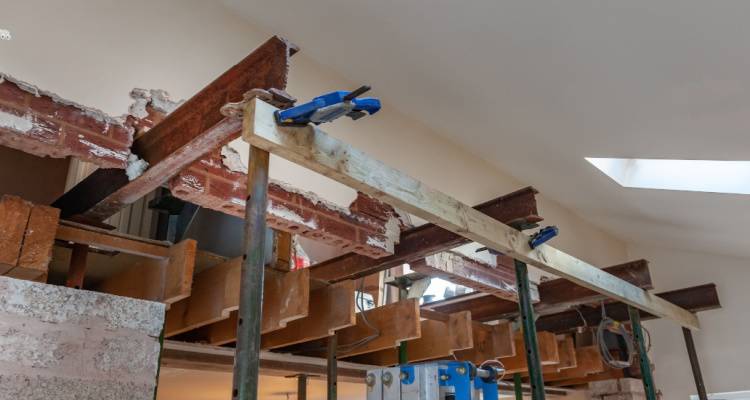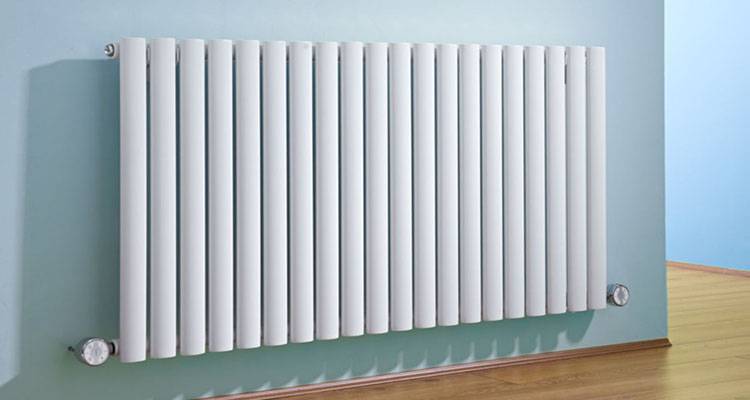Bee Nest Removal Cost
- The average cost of bee nest removal is between £70 to £700 for honeybee nest removal, between £60 to £140 for bumblebee nest removal
- Depending on the job's complexity, it usually takes a standard nest removal 1 to 3 hours and complex settings 4 to 6 hours.
- A breakdown of the pricing details for bee nest removals
- How long the work is likely to take
- Building regulation and planning permission
If a bee nest has taken over your home, it can be difficult to know exactly how to remedy the problem in an environmentally friendly way. Is it best to hire an expert for bee nest removal, or keep it as it is and hope the bees eventually disperse?
To ensure both the safety and preservation of bee populations in the UK, it’s important you hire professional services to remove the bee nest safely and carefully–especially if the nest is located near high-traffic areas in the home, above doorways, or if it’s near individuals that are allergic to bee stings.
It can cost anywhere between £60 to £700 for a bee nest removal.
In this article, we’ll look at honey bee nest removal options and the average costs to ensure you’re clued up on what to do if you ever need to remove a bee nest from your premises.
If you are looking for pest control, we have you covered!
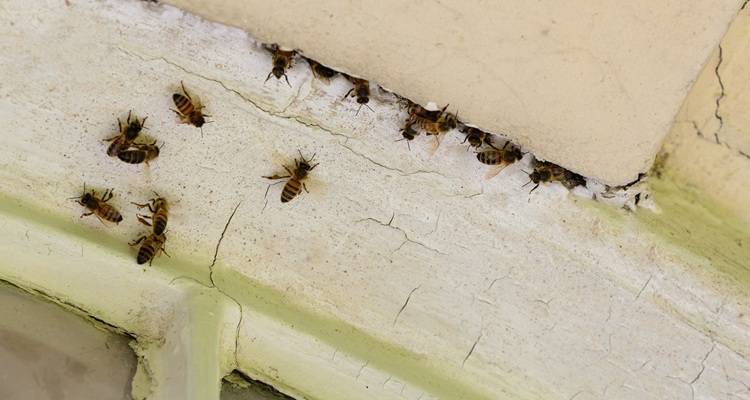
£380
Table of Contents
- How Much is Bee Nest Removal?
- Supply Costs for Bee Nest Removal
- Additional Costs for Bee Nest Removal
- Labour Costs and Timescales for Bee Nest Removal
- Cost Factors for Bee Nest Removal
- Building Regulations Related to Bee Nest Removal
- Types of Bee Nest Removal Methods
- Alternative Options for Nest Management
- Hiring Contractors Checklist for Bee Nest Removal
- Removing a Bee Nest Yourself: Considerations and Costs
- FAQs
- Sources
How Much is Bee Nest Removal?
Honey bee nest removal in the UK can cost between £70 and £700, depending on the size, location, and ease of access. Bumblebee nest removal will cost slightly less, ranging between £60 and £140.
The bee species will impact the price you’ll pay for their removal. Honey bee nests can contain between 20,000 and 60,000 bees, while bumblebee colonies can carry up to 400, reflected in their price differences.
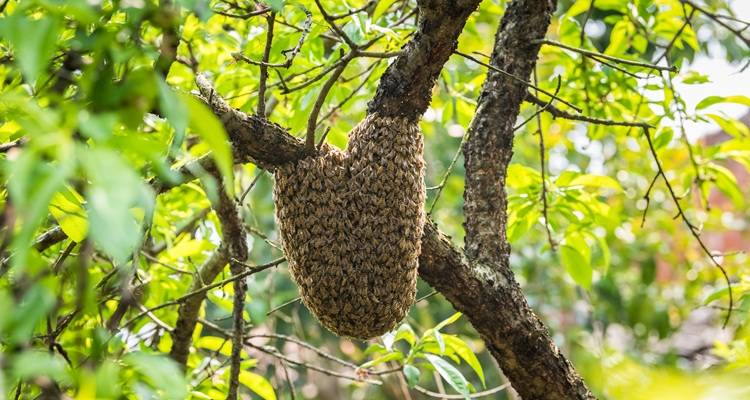
Several factors can affect the need to remove a bee nest, but if the bees are causing structural damage to your property, the longer you leave the problem untreated, the worse–and more expensive–the remedial work will be. Carpenter bees like to nest in wood, whereas honeybees prefer walls, chimneys and loft spaces.
The bees’ behaviour will also help to shape the price you’ll pay for nest removal, with aggravated or aggressive hives being more challenging to remove or relocate–typically seen with those in smaller indoor spaces–while bumblebees cause the least issues and usually don’t need to be removed.
Bees are an endangered species essential for the planet’s ecosystem, but a decreasing habitat threatens them, as well as the use of pesticides, the presence of parasites and diseases, and human activity. Because of these factors, bee hive removal focuses on relocation rather than extermination.
Bee Nest Removal Prices
Let’s take a closer look at different types of bee nest removal to give you an idea of the budget you may need to fix your problem:
| Activity | Total Estimated Cost |
|---|---|
| Honeybee nest removal | £70 to £700 |
| Bumblebee nest removal | £60 to £140 |
| Removal of honeybee swarm | £80+ |
| Removal of honeybees in chimney | £180+ |
| Treatment of mining bee nests | £100+ |
Honeybee nest removal ranges from £70 to £700, depending on the size and location of the nest. As honeybee nests can contain up to 60,000 bees, the costs can significantly increase in line with the number of bees present.
Bumblebee nest removal costs much less and is fairly cheap, ranging from £60 to £140. To remove a honeybee swarm, prices start at £80 and rise in line with the size of the swarm and difficulty.
Removing honeybees from a chimney can cost upwards of £180, while treatment for mining bee nests starts at £100 and rises with complexity and bee volume.
It’s worth searching online for bee nest removal or relocation services near you, as most counties have free schemes run by volunteers or charities who are happy to take care of the work for you.
Supply Costs for Bee Nest Removal
Bee nests are most likely to be found high up, nesting in nooks in ceilings, beneath porches, or in loft spaces. As a result, ladders and other specialist working-at-height equipment may be needed to reach them.
If accessibility is an issue, you may need to hire scaffolding to access hard-to-reach areas—an access tower costs between £65 and £110.

A piece of equipment synonymous with bee hive removal is a protective outfit or a beekeeper's suit. If you plan to DIY this task, these will cost you upwards of £50.
As bees are endangered, tools or equipment must be friendly and non-invasive. There are a range of bee-friendly products to choose from, such as smokers (£30+), brushes (£20+), oil and herb blends (£26+), and complete bee removal kits (£75+).
Although a DIY route is possible, professional handling is recommended, as you can harm yourself or the bees during the removal or relocation process.
Additional Costs for Bee Nest Removal
Once the bee nest has been removed or relocated, you may need to do some remedial work to correct or fix any areas of your home that the bees may have impacted. These tasks can include:
Repair Work
If you have had an infestation of carpenter bees who like to feast on wooden structures, you will likely need repairs or replacement work. This could be on window frames, wooden porch surrounds, or sheds.
For nests in walls, chimneys, or cavities, you may need to patch up once the hive has been removed, such as replacing eaves felt (around £400), repointing your house's brickwork (starting from £600), or replacing ridge tiles (around £300).
Relocation Services
Owing to their endangered status, contractors commonly relocate bee nests to a more suitable location. This is usually charged as an additional fee to the original removal and varies depending on the local area and associated guidelines.
The British Beekeepers Association can help with free, volunteer-run honeybee swarm collections in the UK. These bees can then be relocated and rehomed under their protective service, helping to prevent unnecessary harm to the hives.
Honeycomb Removal
If you have had a nest of honeybees removed, you may need their honeycomb cleaned up to prevent residue that could attract pests. This is likely to carry extra costs and will depend on the leftover honeycomb's size and ease of access.
Follow-Up Visit
Some beekeepers may want to pay you an extra visit to ensure the bee removal has been successful and the hive has not returned to its original location. This service is often offered free of charge, but it’s best to double-check this with your contractor.
Labour Costs and Timescales for Bee Nest Removal
The general timeline for removing bee nests is typically between 1 and 3 hours. For more complex settings, such as those where hives are in chimneys or deep in-wall nests, the time can extend to 4 to 6 hours.
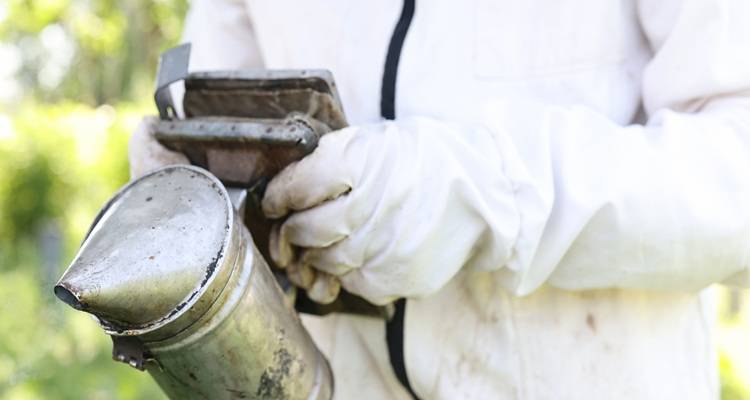
If ease-of-access is restricted, the time can increase further. While some beekeeping services are free–such as the British Beekeepers Association, which handles swarms of honeybees in the UK–most services act on a paid-for basis, starting from £60 for bumblebee nests and £70 for honeybee nests, rising to more than £700 in some complex, high-volume situations.
Cost Factors for Bee Nest Removal
Bee nest removal costs can be influenced by several factors, which is why the removal cost range can swing from £70 to £700 for honeybees.
Location and Accessibility
Most bee removal companies carry their own working-at-height equipment to reach hard-to-reach areas such as high alcoves, roof spaces, and eaves. However, the use of the specialist equipment will cost money and will likely bump up your overall project costs.
If you have a bee nest in your wall cavity or roof space, your removal costs will be higher than those associated with bee nests in open spaces such as gardens without limited access.
Nest Size
As with all home projects, the bigger your area, the higher your cost will be–and the same is true with bee hive size. Larger nests, hives, or swarms will require more equipment and resources to remove and may need one or more bee specialists, resulting in higher labour and supply costs.
Time of Year
The best time of year to remove bee nests is late winter and early spring because there are fewer bees. This means relocation and removal costs are far higher during peak bee seasons such as summer.
While local volunteer-led organisations offer some free relocation services, most bee removal companies will charge more during the summer due to higher service demand.
Bee Species
Although you may think a bee is just a bee, the species impacts the removal and relocation service required. Honeybees are often relocated, while bumblebees can be left to their own devices.
Other species, such as carpenters, may need different handling, resulting in different pricing for increased risk.
Building Regulations Related to Bee Nest Removal
Bees are essential for the planet’s ecosystem, but they aren’t a protected species at the time of writing. In the UK, bees are classed as an endangered species, and several acts help to protect them:
- The Bees Act 1980 - this allows the government to create orders to prevent the spread of new diseases that impact bees
- The Bee Diseases and Pests Control Orders - similar to the Bees Act of 1980, this helps to protect bees from existing pests and diseases that impact bees
- Other Legislation - various food, drugs, veterinary, and environmental laws help to protect bees.
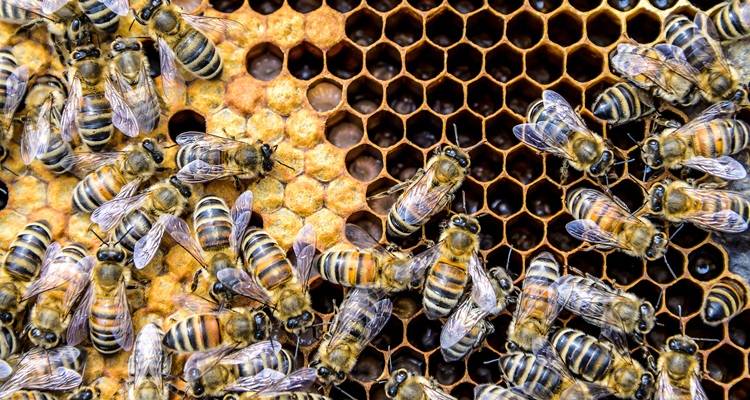
Due to their intrinsic value to the planet, bees need these regulations to help avoid unnecessary pests and diseases from harming their kind. These acts also help to encourage safe relocation to protect bee populations.
While bee extermination is legal in the UK, regulations are surrounding it:
- You can’t use wet sprays or toxic poison to kill bees
- The nest must be treated post-extermination to avoid harming other bees that may enter the nest
- Risk assessments must be carried out pre-extermination
- Honeycombs must be disposed of as controlled waste by licenced waste removal services
Any extermination service must be part of a regulated UK pest control body, such as The British Pest Control Association (BPCA) or The National Pest Technicians Association (NPTA), to ensure they are working according to guidelines.
Types of Bee Nest Removal Methods
Removal methods will differ depending on the species of bee. The most common method is a professional relocation, where the hive, nest, or swarm is safely removed from your premises and rehomed in a more suitable, protected environment.
This ensures that the bees are safely moved to an alternative location, ensuring they continue to live and provide for the planet while being eco-friendly, environmentally, and ethically sound.
However, in some instances, extermination may be the only option. This is most likely in circumstances where:
- There are a high number of bees in and outside of a property
- The access/entry point of the bees is unclear, leading to an infestation
- Holes in wood or bowing/distended ceilings or walls
- Dark patches in walls or ceilings, coupled with a musty odour
Professional extermination may be the only option in scenarios where an infestation is taking place, and the property’s structure is under significant strain. To ensure safety, it must be handled by licenced professionals.
Preventative measures around the property can help prevent bee nests from forming, such as sealing holes or cracks after removal, to avoid recurring issues.
Let’s compare and contrast those different removal methods:
| Activity | Advantages | Disadvantages |
|---|---|---|
| Bee relocation/removal | Ensures the bees are taken somewhere more suitable, harmless | Bees can return; some companies may not carry out the relocation service safely |
| Preventative measures | Helps to avoid recurring bee hive/swarm issues, is cost-effective, harmless | It might not be as effective as other options |
| Extermination | Completely removes the issue | Isn't environmentally friendly, in some cases, unnecessarily harsh action |
Alternative Options for Nest Management
There may be instances where removing the bee nest might not be what you want to do. Bumblebee nests are the least impactful of the collection, and if they have nested somewhere tucked away from day-to-day activity on your property, you may find you’re happy to leave them to carry on about your business without interference.
If you’re aware of recurring issues with bee nests, you may want to install bee houses around your property to encourage their safe, designated nesting away from your home’s entryways. These can be as little as £6 for solitary bee homes or upwards of £50 for bigger structures suitable for hives.
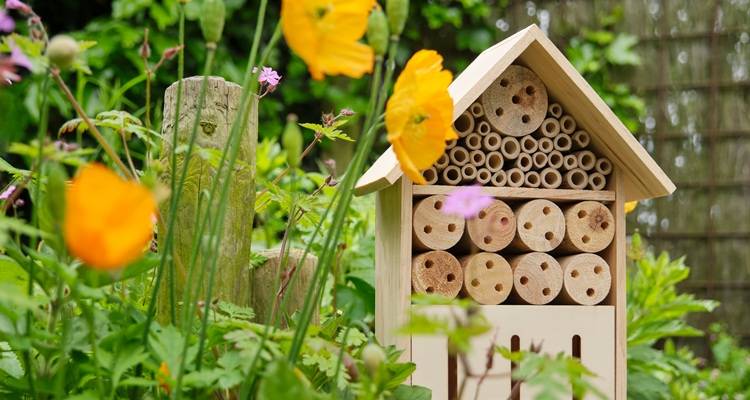
You can also plant natural bee deterrents around your property to help ward them away from your area. Plants such as peppermint and citronella (often used in candles to deter insects during summer months) are natural alternatives to help prevent bees from nesting. If they’re placed in strategic locations–such as high-traffic areas or near wooden structures–they can help to reduce the likelihood of bee nest formation.
Hiring Contractors Checklist for Bee Nest Removal
When hiring a contractor for any job around your home, it’s best to thoroughly vet their credentials before agreeing to work with them–and when it comes to live bee removal, this is even more important.
First, you should verify the contractor’s bee conservation practices and licensing. As bees are endangered, it is paramount to ensure they are handled safely and carefully to ensure their livelihoods aren’t negatively impacted.
Check for relocation experience versus extermination, as the two are very different practices. It’s essential to research this properly, as you don’t want to pay for a relocation service if the team actually exterminates the bees instead. It’s cheaper for them to do so, but it’s not environmentally friendly or ethically sound.
Ensure you look at the company’s reviews, paying attention to their timeliness, whether or not they were friendly/helpful while on-site, and, crucially, if they carried out the job effectively. It’s a good idea to see if they mention if any follow-up visits are included, as this can be a good indicator of their care and attention in the industry.
Ask for a full written quotation with an itemised breakdown of everything included in the fee. Make sure you know if the follow-up consultation is free of charge or paid for, and check to see if that is added to your written quote.
Try not to settle for a verbal agreement–it might be tempting to get the job done as quickly as possible just to sort it out, but if something goes wrong during the project and the cost suddenly skyrockets once complete, you’ll have nothing to fall back on to contest the contractor’s word.
Removing a Bee Nest Yourself: Considerations and Costs
If you have studied bee nest removal, are satisfied with the steps and process, and have the required PPE and protective clothing, you can attempt a DIY approach. However, you must have a clear exit strategy if the nest becomes agitated and the bees become aggressive, as this situation could lead to stings and unnecessary bee deaths.
All bee removal items should be bee-friendly to ensure the bees won’t be harmed. There are a range of bee-friendly products to choose from, such as smokers (£30+), brushes (£20+), oil and herb blends (£26+), and complete bee removal kits (£75+). A protective beekeeper suit costs upwards of £50.
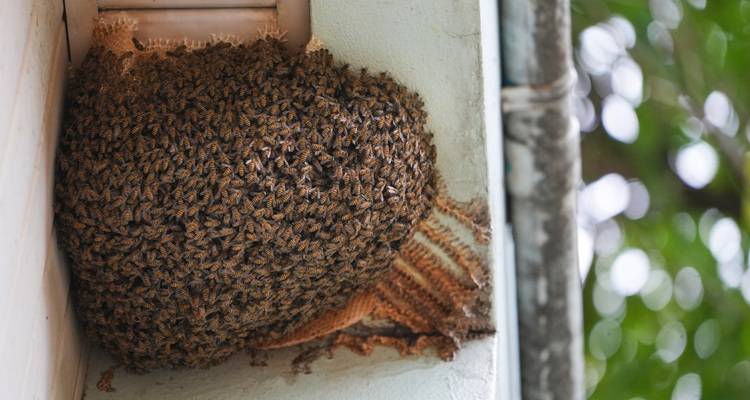
Bee nests in hard-to-reach locations such as loft spaces, roof cavities, or high up on second-storey or above eaves are best left to the professionals, as the added complexity of working at height can lead to complications and accidents.
If you are unsure about any steps associated with bee nest removal, it’s best to leave it to the professionals to take care of in a safe and measured manner. With live bee hives and swarms comes the potential for mass bee casualties if the work isn’t carried out safely, which can harm the ecosystem and yourself if you get stung.
FAQs
Are Bees Protected by Law in the UK?
- The Bees Act 1980 - this allows the government to create orders to prevent the spread of new diseases that impact bees
- The Bee Diseases and Pests Control Orders - similar to the Bees Act of 1980, this helps to protect bees from existing pests and diseases that impact bees
- Other Legislation - various food, drugs, veterinary, and environmental laws help to protect bees
What’s the Best Time of Year to Remove a Bee Nest?
How Can I Prevent Bees From Nesting Again?
Can I Remove a Bees Nest Myself?
What Happens if I Leave the Bee Nest?
Sources
https://beegone.co.uk/how-much-does-a-bee-removal-cost
https://apex-pest-control.co.uk/bee-nest-removal
https://www.pestuk.com/pest/get-rid-of-bee-problems-bee-removal-specialists
https://www.bbka.org.uk/Pages/Category/swarm-removal
https://www.legislation.gov.uk/ukpga/1980/12/contents
https://www.nationalbeeunit.com/bees-and-the-law
https://www.pestinterceptors.co.uk/post/why-you-can-t-kill-honey-bees

